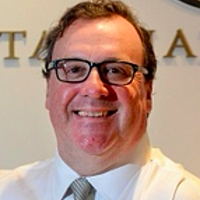Lessons from two world-class portfolios
The Kilauea volcano has been erupting almost constantly for the past 35 years. The current investment landscape reminds me a lot of Kilauea, with numerous ongoing geopolitical eruptions and their financial ‘lava’ threatening to recast the map of long-standing investment strategies.
How can investors optimise investment outcomes, and enjoy peace of mind, in such an environment?
It is always prudent to take lessons from the smartest people in the business.
In this case, I am talking about the organisations that manage their funds in a fiduciary-centric way to be ‘all weather.’ They embrace strategies which are true diversifiers and which complement their overall investment approach.
So, let’s interrogate this through the prism of two world-class portfolios – Australia’s Future Fund, and the Harvard University endowment fund in the United States.
Two true diversifiers
Guidance from the $140 billion Future Fund is that for the 12 months to the end of March 2018 their return was 8.6%, which is in line with its yearly average for the past decade.
The Harvard fund (AUD 50 billion) returned 8.1% on investment in the year ended June 2017 – a year they lamented as sub-par, as the fund has generated an average of better than 10.0% per year for the past two decades.
Raphael Arndt, the Future Fund’s Chief Investment Officer notes that “the successful investments of the last five decades won’t necessarily be the successful investments of the next five decades,” and comments that he is focused on the role that the “new generation of hedge funds (will) play in delivering uncorrelated returns and reducing risk.”
The Harvard Management Company, which operates the university’s endowment, is, like Dr Arndt, also wary of the past … and is currently reconstructing its investment foundations from traditional “asset allocation” towards a “risk allocation strategy.” The objective is to achieve better management of risk across the fund, rather than individual asset classes.
Harvard allocates around 15% of its funds to Absolute Return, which is the same amount the Future Fund allocates to Alternative Assets – but in handing over his money, Dr Arndt measures performance against the objectives of diversification, downside protection and alpha generation. He’s hit the nail right on the head. But what sort of diversification optimises downside protection and alpha generation?
The peace of mind all investors desire
Even Nobel Prize winner Harry Markowitz’s 'Modern Portfolio Theory' wasn’t quite there. As we found out, all asset classes are affected by systemic shock such as the GFC.
True diversification is often difficult to achieve in high volatility markets, as traditionally uncorrelated assets become highly correlated – failing the investor when most needed.
And to my mind, diversification these days requires a lot more than a spread of asset classes and geography.
Arndt says “the inclusion of uncorrelated sources of return in our portfolio allows us to invest into risk assets elsewhere in the fund.”
Which brings me to the nub of my argument: The true diversifiers in approach to investment that Australian investors need to fully embrace are equity market neutral, which we will discuss in a future wire, and managed futures.
Integrated into a portfolio, they enhance the high probability of returns at a targeted rate year after year and have a “smoothing” effect... the peace of mind that all investors desire.
Achieving true diversification
Ineichen, a leading asset allocation researcher, concluded a well-managed portfolio of managed funds: “delivered a positive return in 18 out of 20 systemic events in the equity market from 1980 to 2012.” Ineichen added that “in the field of investment management, there is simply nothing that comes anywhere close to this.”
We have been researching uncorrelated returns for several years, and the results are incontrovertible: managed futures work.
The key point is that to optimise managed futures to achieve true diversification, it is critical to have the correct, diverse mix of largely uncorrelated global managers on your platform.
5 topics

